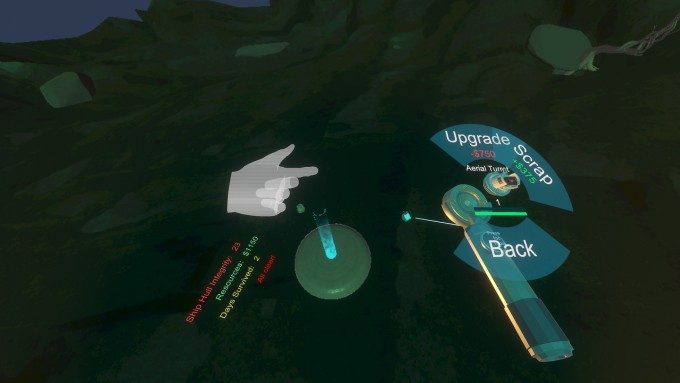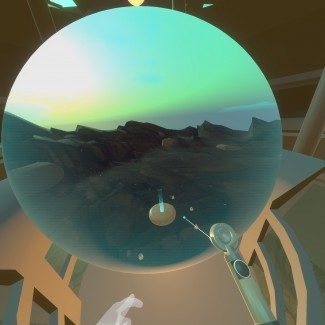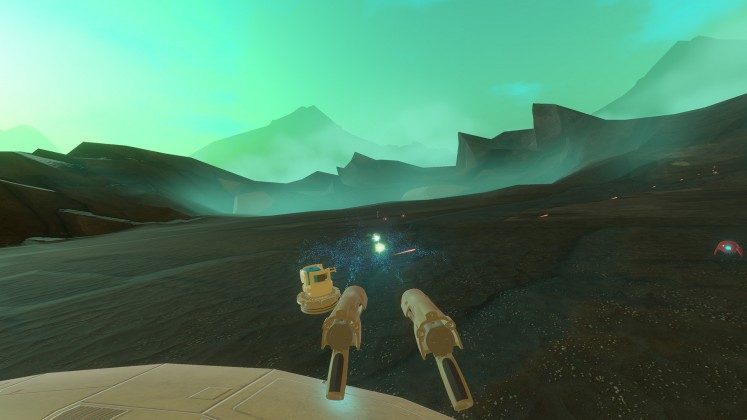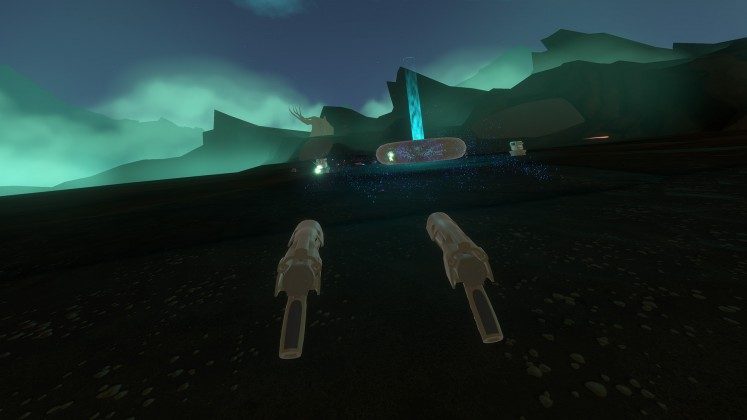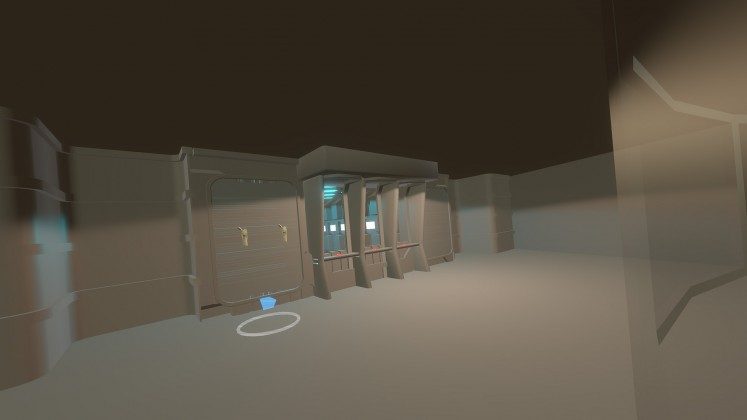Developers Metaware Limited are working to utilise virtual reality and HTC Vive’s room-scale talents to evolve the familiar genre of Tower Defence with some unique gameplay innovations that only really work in VR. It’s called XLR.
Tower defence, the mainstay of mobile gaming everywhere and arguably one of the most richly plundered and subsequently worn out genre there is out there. This is why developers Metaware Limited decided to take the all too familiar gameplay elements of turret building and attempt to encourage some evolution with some fresh ideas.
Metaware Ltd comprises just two developers, one programmer going by the name Creo and a designer, known as Vox. The two have been working for the last couple of years on a procedurally generated world-building title by the name of Metaverse and even dabbled in VR with Metaverse Construction Kit. When they reached out to Valve Creo tells me that XLR‘s evolution was rapid. “We started prototyping, and before long we realized we were on to something fun,” he tells me, “We’ve only been working on XLR since the end of January, but it’s already evolved significantly and has taken on a life of its own.”
“Our initial thought was to give the player a game table where they can plan, build, and see an overview of everything happening, and then allow them to teleport down into first person mode,” Creo says, ” The game table idea worked, but it didn’t feel quite like we wanted it to. We had the ability for the player to grab a map dongle and move it in 3D space to pan and zoom the overview map. Visually and technically it was very cool, but building turrets and walls with it just wasn’t clicking with us the way we wanted it to.” But after some back and forth between the developers, they settled on a mechanic made possible by VR and postional, room-scale tracking. “Then we tried a spherical portal into the game world. Something like what Saruman would have, except that in our version, you can literally step into it. The first time we walked into this portal and started building, we knew it was a winner. It just felt so good.”
This unique premise has led to some rapid development progress, spurred on and inspired by the project, what you see in the videos is the product of just a couple of months work. “We’ve only been working on XLR since the end of January, but it’s already evolved significantly and has taken on a life of its own. We recently invited another programmer to work on XLR with us, and it’s been great to have his hands in the project.”
XLR isn’t all about building turrets though, Creo is keen to emphasise. Metaverse Ltd aren’t interested in relying on room-scale VR as a tacked on gimmick. “We didn’t want to just take a genre and strap VR onto it,” he says, “We’re trying to take advantage of the room scale VR experience of the Vive in every way we can. In the game, you start out in a crashed ship, and as you begin to repair it, you are attacked by autonomous mechanical organisms on the planet. There will be nine different rooms you can teleport to inside the ship to prepare for the onslaught of enemies. The first room we have implemented is an armory were you can grab your gear and do a little target practice.”
XLR also includes the beginnings of time-travel elements too, based around your downed spacecraft’s “graviton star drive”, something which sounds like it’s pulled straight out of pulp sci-fi novels. “In the game, your ship is currently too damaged to escape the atmosphere,” Creo tells me, “but you can repair its graviton star drive enough to slip through time and space. In its current implementation, XLR allows you to fast-forward time when you’re ready for the next wave of enemies. We’re currently playing with different time-based abilities, and we think there’s a lot of fun to be had in that direction.”
It all sounds very interesting and, allied with XLR‘s starkly beautiful, minimalist, emerald tinged aesthetic it’s certainly looking unique. The production design has a distinctly retro feel to it, somewhat reminiscent of classic 50’s Sci-fi – it’ll be interesting to see how that design evolves as development continues.
It’s early days for XLR so no release date is available yet, but given the rapidity of Metaware Ltd’s progress thus far, I suspect we’ll be hearing more from the team soon. The title is currently focused on development for the HTC Vive, but the team also want to bring the title to the Oculus Rift as a seated experience too.

